Interview with Tetsushi Ueda
0November 4, 2013 by Ville Raivio
VR: Your age and occupation?
Products from Pukimo Raivio
Ralph Lauren, Black Label suit, size 52EU
TU: I am 40 years old. I manage a shoe store, and I am also a shoemaker.
VR: Your educational background?
TU: I graduated from the Kyushu Technical University, majoring in Industrial Design.
VR: Have you any children or spouse (and how do they relate to your shoe enthusiasm)?
TU: Yes, I am married, but we don’t have a child. My wife and I run the store together.
VR: …and your parent’s and siblings’ reactions back when you were younger?
TU: They are warmly supportive.
TU: What other hobbies or passions do you have besides shoemaking?
TU: I love to cook: Japanese, Italian, Chinese etc…. I cook them all.
VR: How did you first become interested in shoes, and when did you turn your eyes towards shoemaking? Why classics instead of fashion?
TU: In college, I majored in Industrial Design, which is essentially ‘3-dimensional design’. I was enamored by how identical products would change over time when used by different people in separate environments. My interest in shoes started as a pure coincidence. I love cars, and I initially aspired to become a car designer. I thought designing cars would be the most worthwhile endeavor among the sculptural designs. However, I wasn’t able to pass the car manufactures’ entrance exams. Disappointed, I decided to try one more time to get hired as a designer.
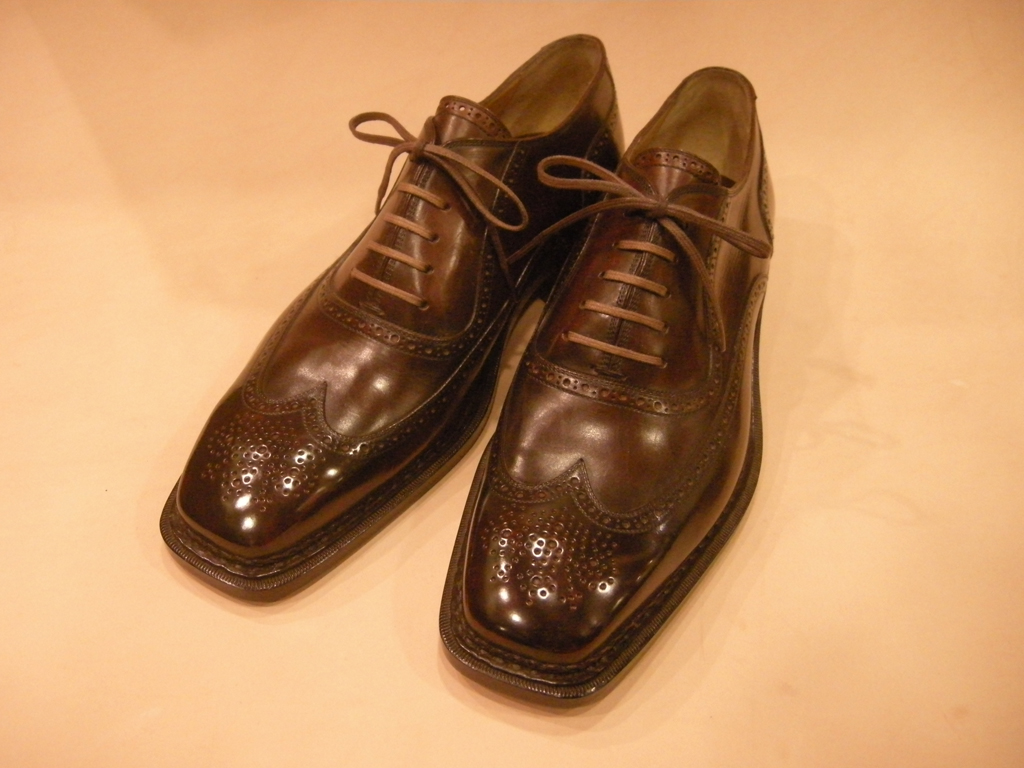 Full brogues with Norvegese stitching
Full brogues with Norvegese stitching
On a college bulletin board, I happened to see a recruitment brochure for a ‘shoe designer’. I realized that shoes are indeed designed 3-dimensionally, so I immediately called the recruiter, Regal Corporation. I was fortunately hired by Regal, and was determined to stay at least 3 years working for them. However, I wasn’t able to completely abandon my passion for designing cars, so I always carried a set of sketching tools with me. I gradually developed interest in shoes after 6 months of training at the sales, the production lines, and through attending seminars conducted by leather industry experts. After my training, I was transferred to the Planning department, and my passion for shoes developed even more.
At the Planning department, I was in charge of the Italian brand GEOX. I designed the shoes, selected the leathers, commissioned the samples, and spent the rest of my time traveling around the country giving presentations to our corporate customers. I soon became interested in hearing the voices and opinions from customers themselves so on weekends, I volunteered to work at the retail stores. I also organized events such as offering personalized coasters on Father’s Day, and conducting feet measuring and consulting sessions. One of the customers asked for my consultation in regards to his left and right feet differing in size (since he injured his right foot in his childhood). Another customer said his ankle bones are abnormally located, and couldn’t fit in any shoes bought off the rack.
I was taken back when I first about the abnormal ankle. So the next day, I consulted our company’s ‘orthopedic laboratory’ and asked to see the data on ankles. When I saw the data, I was in shock. While the data only included the ankle heights on 25 cm size feet and below, 1 out of 4 men had their ankle bone located below the standard top lines of our footwear, and were wearing them uncomfortably. With so many shoes being sold in the market, I simply couldn’t digest the fact that so many people were still having troubles with fitting. It was during this time that I got interested in order made shoes tailored for each client’s feet.
Since most of the shoes I admired were made in Italy, it felt naturally for me to seek my study in Italy. I believe shoes could be classified as functional beauty. I realized this after moving to Italy. The basic design of shoes was not developed in these past few years. Rather, they are a culmination of a long history of trial and errors. I wish to first learn more about the classic styles. Hence, I prefer classic over fashion.
 Heavy trail boots with ball straps — and yes, it’s a real technical term
Heavy trail boots with ball straps — and yes, it’s a real technical term
VR: How have you gathered your knowledge of this area — from books, in-house training, workshops or somewhere else?
TU: I accumulated my skills and know-how from my employment, my apprenticeship, and from the real world experience since I started my own business. I believe the latest trends could only be learned from real world experiences, not from schools.
VR: I have read that you were apprenticed under Mannina. What made the company special for you over so many others in Italy, and how would describe the ‘house style’ they have?
TU: When I started my life in Italy, I walked around Florence every day looking for shoe workshops after attending classes at a language school. I took notice of Mannina on the very first day when commuting to school. Intuitively, I thought this place was it, but I searched for other workshops too. I eventually decided on Mannina, and asked if I could apprentice there. Their house style is to realize the desire of the clients at an affordable price. That was exactly what I also envisioned for my own path.
VR: Do you have a favorite shoe model (e.g. monk, derby, oxford, balmoral boot) and leather type?
TU: My favorite style is the Y tip derby in Norvegese construction (pictured below). This model is made on the very first last that I crafted at Mannina, 1 year into my apprenticeship. I love to use Italian full vegetable-tanned leather; Conzeria, 800, Baradache are some of the better ones. I’ve been on business for over 10 years, and I think these leathers really capture the attention from both the makers and the clients. I don’t plan to ever stop using them, and I hope more makers around the world would use them too.
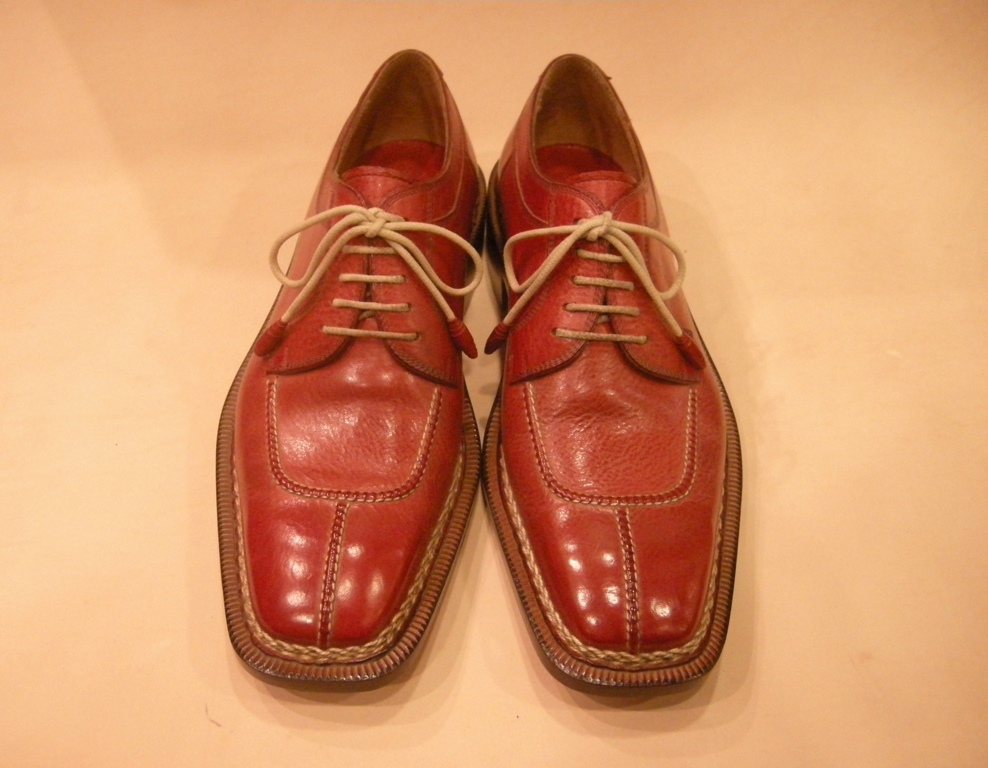 A Norwegian Norvegese-welted derby
A Norwegian Norvegese-welted derby
VR: How would you describe your own dress? Which tailors or RTW makers do you favor?
TU: My personal style revolves around jackets/pants. I almost never wear suits. I am fond of shirts. Among them, I love Luigi Borrelli the best. I tried them on the very first time when I was still at Mannina. Aside from shoes, the store carried shirts, ties, sweaters etc…
VR: Please tell us how your company was born and what goals you set for yourself in the beginning. How have you been received so far?
TU: As I previously answered, I wanted to make a store that would help solve people’s orthopedic problems. If the ankles tend to rub against the top line, then simply alter the pattern to solve the problem. I wanted to offer such services. When I started my business, I was determined to make it a client-oriented store. I wanted to offer as many styles as possible according to the wishes of the clients. I don’t want anyone to be inhibited to enjoy their hobby/sports due to orthopedic problems. I’m happy to say that my clients give positive comments about the comfort and the variety of shoes offered here.
VR: How would you describe the ‘house style’ of the shoes you make?
TU: My house style is defined by my pursuit of functional beauty. Shoes may look quite different depending on the intended usage. Mountain boots have their charm, and riding boots also have their distinct charm. My house style is not defined by the beauty on the surface, but a beauty that comes from the function.
VR: There are dozens of cordwainers in Japan alone — why should my readers visit you?
TU: There are numerous cordwainers in Japan, and we each have our own ideals. I believe such ideals do manifest in the shoes. I would leave it up to the customers to determine which shoes speak to them.
VR: Do you feel that Japanese cordwainers are different from the European ones?
TU: Yes, I believe there are differences. A little while ago, I saw a craftsman from Ferragamo showing a shoemaking performance. He interacted with the audience by answering many questions, and my impression was that this gentleman seemed to really enjoy shoemaking. That really struck me, since he seemed to enjoy making shoes much more than the counterparts in Japan. I felt something similar during my apprenticeship in Italy.
VR: Over the years you must have learned quite a bit about shoes. Is there something you wish more men would know? This is an extremely useful chance to have a lasting effect on Keikari’s younger readers, who so far haven’t had years of experience with welted pairs.
TU: I would like men, and also women, to know that well-fitted shoes feel even more comfortable than walking barefoot. There is a pair of perfect fitting shoes waiting for you somewhere in the world, or better yet, you can have it made. Well-fitting shoes could make you healthier, and would make your walks more enjoyable. Please find a pair that fits your feet, and enjoy your everyday life.
Often times I hear about the benefits of hand-welted shoes, but I don’t necessary agree that a pair of shoes have to be handmade, nor welted. A good pair of shoes should be determined by how good it feels on your feet. You don’t read an instruction manual when trying on a pair of shoes. Rather, trust your instincts when trying on a pair.
Aside from making order-made shoes, I am also working on something called ‘Shoe Search System’. If I may, please let me briefly introduce how this works: First, the feet are measured in a 3-D scanner. Similarly, a manufacturer’s collection of lasts is also scanned. By matching the customer’s foot shape with the database, the system can present the closest-fitting last(s) along with the designs, colors, and the price points.
If such system can be adopted worldwide and shared online, a customer would be able to select shoes from around the world, instead of being restricted to his neighborhood. Since I can literally go on and on in regards to this subject, if interested, more detailed information could be found on my Facebook page, Tetsujiya.
About the Olympics:
As you may know, Tokyo will be hosting the Olympics in 7 years. While I still feel a bit of ambivalence due to the Fukushima disaster, I think this event would be a good chance for us (shoemakers) to convey our messages. While I have mostly implemented my knowhow in last and shoemaking for my customers, I really hope to offer such services for some athletes too. Shoes inherently play an important function for various sports. I am interested in designing lasts that would improve the athletic performance, such as a faster time in running. It is my wish to work with an athlete, regardless of nationality, who is willing to communicate, and who is willing to share the Olympic dream with me.
Category Cordwainers, Interviews, Japanese Style | Tags:

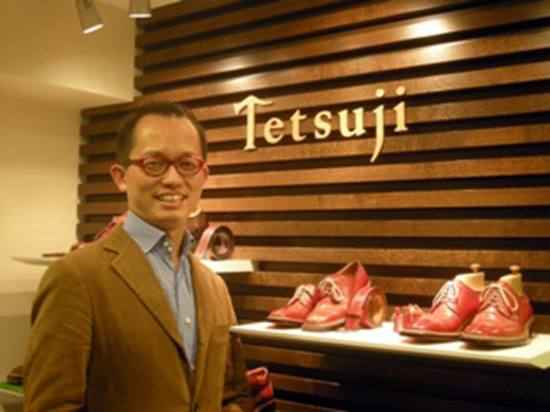
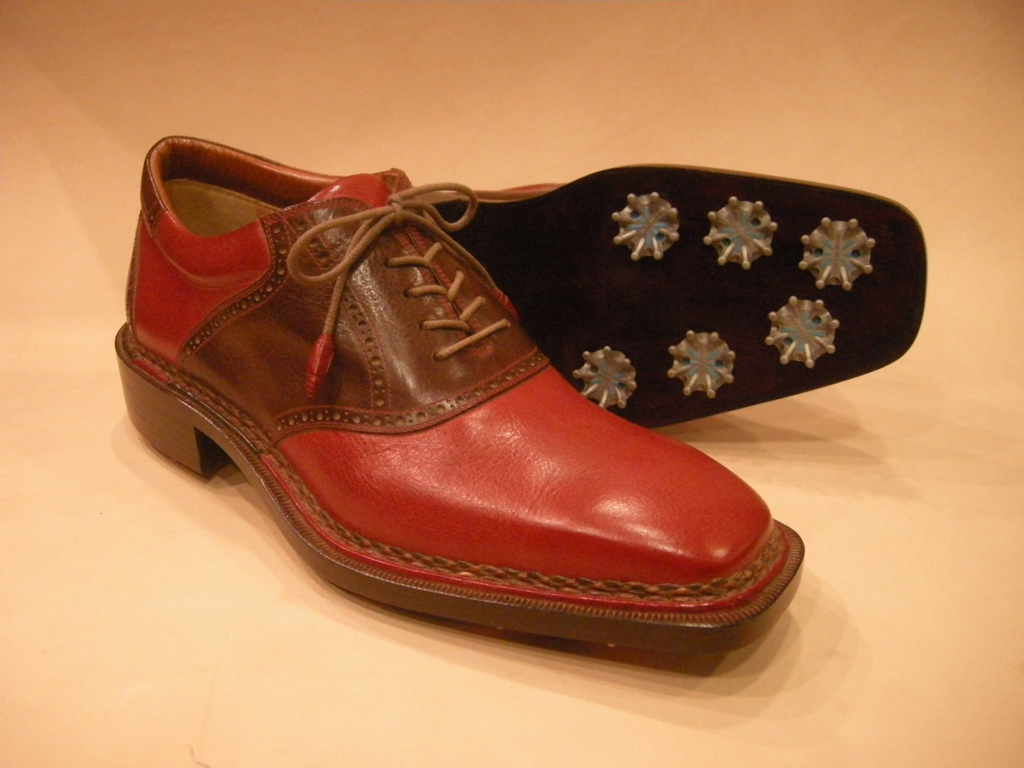
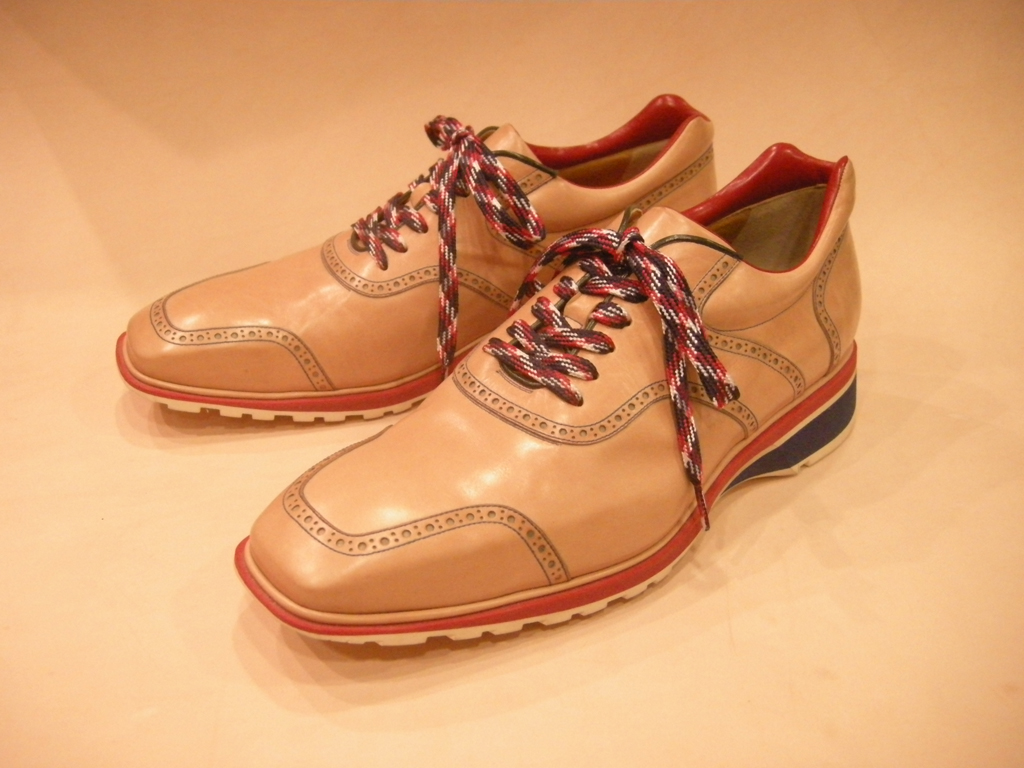



Leave a Reply